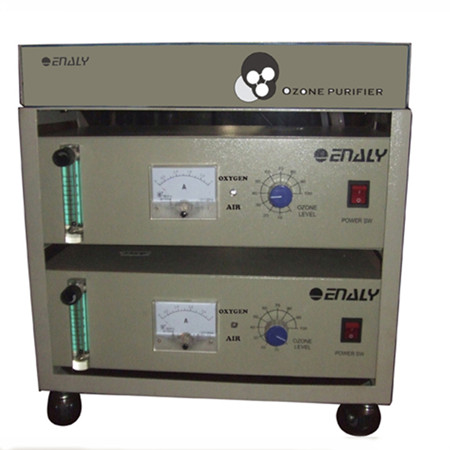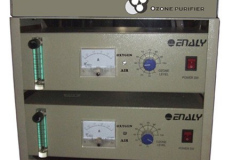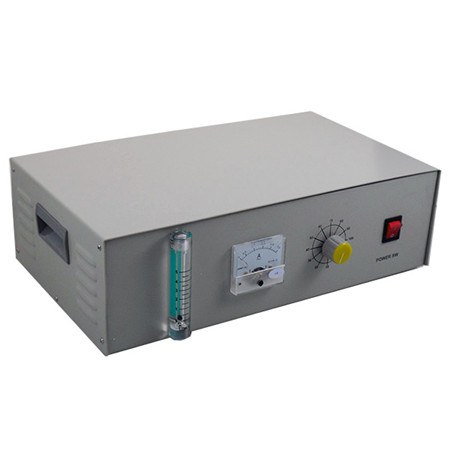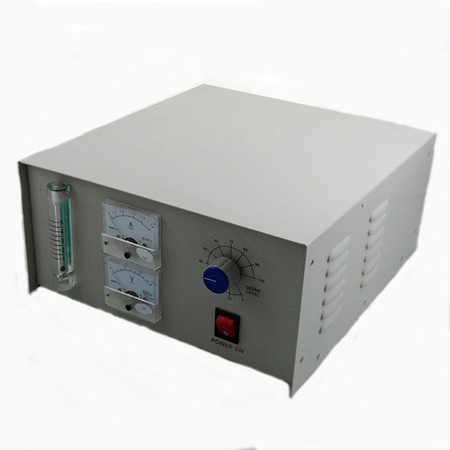Our highly efficient air-cooled industrial ozone generator can operate for extended periods without decreasing ozone output. These generators are ideal for various applications, including drinking water treatment, industrial and municipal wastewater treatment, odor control, air purification, agriculture, food processing, aquaculture, and marine uses.
Utilizing advanced Corona Discharge Technology, this ozone generator produces ozone efficiently and reliably. The ozone cell is meticulously designed and constructed with high-quality materials, ensuring dependable and effective operation.
Each unit undergoes rigorous inspection and testing before delivery to customers. Our strict and comprehensive procedures guarantee that every unit meets specifications and provides long-lasting service for any demanding application.
10K-2U Industrial Ozone Generator Features:
1. Low power consumption with high ozone output.
2. Air cooling only. No needs of cooling water system
3. Integrated designs.
4. Long life performance.
5. Low prices. Low running costs.
10K-2U Industrial Ozone Generator Specifications:
Model Name: 10K-2U
Case size: 470mmX360mmX490mm
Input Power: AC110V / AC220V <p\”>Ozone Output: See chart below
Cooling Method: Air cooling only
Feed Gas: Oxygen or Ambient air
Ozone Generating Method: Corona Discharge (Ozone Tube)
Wattage: <200W
Weight: 22 kg
Max. Ozone Outputs by Dry Clean Air
| Air flow (L/min) | Ozone output (mg/H) |
| 4 | 1400 |
| 8 | 2000 |
| 10 | 1800 |
Max. Ozone Outputs by Pure Oxygen
| Oxygen flow (L/min) | Ozone output (mg/H) |
| 4 | 6000 |
| 5 | 8400 |
| 6 | 10000 |
Step-by-Step Guide to Using an Industrial Ozone Generator for Water Treatment:
1. Assessment and Planning:
-Determine Water Quality: Analyze the water to identify contaminants and pollutants. This will help in determining the required ozone concentration.
-Define Objectives: Set clear goals for the treatment process, such as disinfection, removal of organic matter, or elimination of specific pollutants.
2. Installation:
– Select a Suitable Location: Install the ozone generator in a well-ventilated area, preferably close to the water treatment system to minimize ozone loss during transfer.
– Connect to Water Source: Attach the ozone generator to the water inlet of the treatment system. Ensure that all connections are secure and leak-free.
– Integrate with Existing Systems: If applicable, integrate the ozone generator with other treatment systems like filtration units or UV sterilizers for enhanced purification.
3. Ozone Injection:
– Ozone Diffusers:Use ozone diffusers or injectors to introduce ozone into the water. These devices help in evenly distributing ozone gas throughout the water.
– Mixing Chambers:Incorporate mixing chambers to ensure thorough mixing of ozone with water, allowing for maximum contact and oxidation of contaminants.
4. Monitoring and Control:
– Ozone Concentration: Use ozone monitors to continuously measure the ozone concentration in the water. Adjust the generator settings to maintain the desired ozone level.
– Flow Rate: Monitor the flow rate of water through the system to ensure optimal contact time between ozone and water.
5. Operation:
– Continuous or Batch Treatment: Decide whether to run the ozone generator continuously or in batches, based on the volume of water and the level of contamination.
– Control Systems: Utilize automated control systems to regulate ozone production and injection, ensuring consistent performance.
6. Safety Measures:
– Ventilation: Ensure proper ventilation in the area to avoid the accumulation of excess ozone gas, which can be harmful.
– Ozone Destruct Units: Install ozone destruct units to safely decompose any residual ozone gas before it is released into the environment.
7. Maintenance:
– Regular Inspections: Conduct routine inspections and maintenance of the ozone generator and associated components to ensure optimal performance.
– Cleaning: Regularly clean the ozone cell, diffusers, and injectors to prevent clogging and maintain efficiency.
– Replace Worn Parts: Replace any worn or damaged parts promptly to prevent breakdowns and ensure continuous operation.
8. Documentation and Reporting:
– Record Keeping: Maintain detailed records of the treatment process, including ozone concentrations, flow rates, and water quality parameters.
– Compliance: Ensure that the treatment process complies with local regulations and standards for water quality and safety.
By following these steps, industrial ozone generators can be effectively utilized for water treatment, ensuring high-quality water that meets safety and regulatory standards.
Benefits of Using Ozone in Industrial Water Treatment:
Effective Disinfection: Ozone effectively kills bacteria, viruses, and other pathogens.
Oxidation of Contaminants: Ozone oxidizes organic and inorganic contaminants, improving water quality.
Reduced Chemical Use: Ozone treatment reduces the need for chemical disinfectants and coagulants.
Improved Taste and Odor: Ozone removes unpleasant tastes and odors from water.



